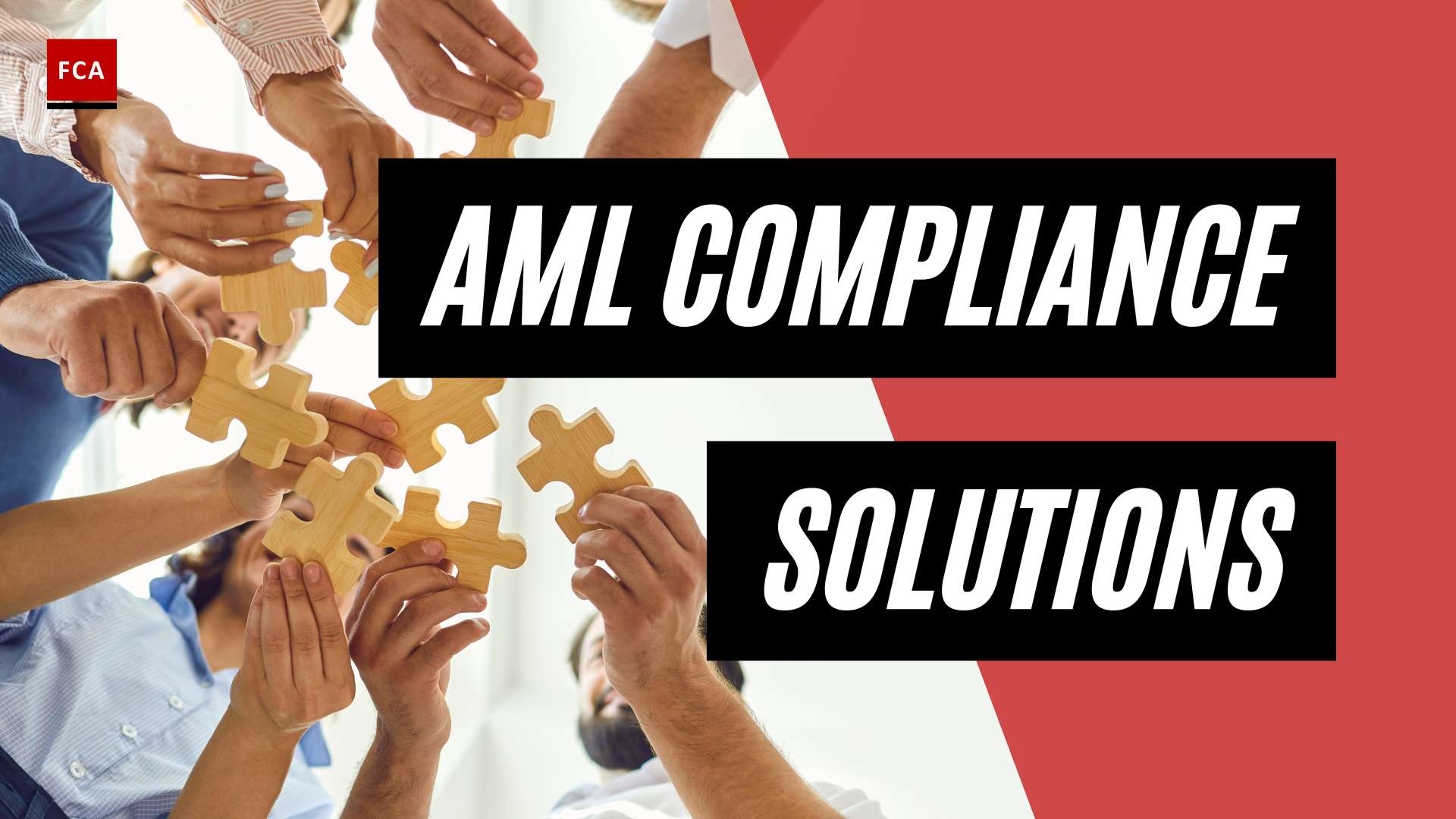Understanding AML Compliance
In the realm of financial services, Anti-Money Laundering (AML) compliance is a critical and mandatory aspect. At its core, it involves a set of procedures, laws, and regulations designed to halt the practice of generating income through illegal actions.
Importance of AML Compliance
The importance of AML compliance in the financial sector cannot be overstated. An effective AML compliance program protects financial institutions from being misused for money laundering or terrorist financing activities. By adhering to a comprehensive AML compliance checklist, institutions can also avoid hefty penalties and reputational damage associated with non-compliance.
The AML compliance checklist generally includes verifying customers’ identities, monitoring transactions for suspicious activities, and reporting any unusual behavior to regulatory authorities.
Identifying and addressing AML red flags, such as large cash transactions, frequent deposits or withdrawals just below the threshold for reporting, and transactions involving high-risk countries, are also crucial part of compliance efforts (KYC Hub).
Key AML Regulations
In the United States, the Bank Secrecy Act (BSA) of 1970 serves as the primary legislation for preventing money laundering. The BSA requires financial institutions to establish AML programs to prevent and detect money laundering and financial crimes.
In addition to the BSA, several other laws and regulations further enhance the AML regulatory framework. For instance, the USA PATRIOT Act of 2001, which was enacted in response to the 9/11 terrorist attacks, expanded the scope of the BSA to focus more on terrorist financing.
Apart from these, financial institutions also need to adhere to the guidelines provided by the Financial Crimes Enforcement Network (FinCEN), an agency of the U.S. Department of the Treasury, and the Office of Foreign Assets Control (OFAC), which administers and enforces economic and trade sanctions.
Furthermore, financial institutions can also leverage platforms like the FINRA Gateway, designed specifically for member firms, to access filings and requests, run reports, and submit support tickets.
Understanding these key AML regulations is the first step in building a robust AML compliance framework and safeguarding your organization against financial crime.
Essential Steps in AML Compliance
The core of any Anti-Money Laundering (AML) program is the execution of certain essential steps. These steps form the basis of the AML compliance checklist, a vital tool for professionals in the compliance and risk management fields. Below, we delve into three crucial areas: customer identity verification, transaction monitoring, and risk assessment.
Customer Identity Verification
The first step in the AML process is customer identity verification, also known as the Know Your Customer (KYC) process. This step is fundamental to preventing and detecting money laundering and financial crimes. The KYC Hub highlights that customer identity verification is a key component of the anti-money laundering checklist.
Customer identity verification can be achieved through various methods, including reviewing government-issued identification documents, verifying contact information, and checking against databases of known or suspected criminals. For a comprehensive guide on customer identity verification, see our Know Your Customer checklist.
Transaction Monitoring
Another vital step in AML compliance is transaction monitoring. This process involves observing customers’ financial transactions for any suspicious activity. Such activities could include large cash transactions, frequent deposits or withdrawals just below the reporting threshold, and transactions involving high-risk countries.
Suspicious transactions must be investigated promptly to determine if they are indicative of money laundering or other financial crimes. Any unusual behavior should be reported to the relevant regulatory authorities as part of a firm’s AML program. For more details on how to implement an effective transaction monitoring process, refer to our AML Compliance Program guide.
Risk Assessment
Carrying out a risk assessment is the final essential step in the AML compliance process. This involves assessing the potential money laundering risks associated with each customer, considering factors such as their occupation, country of residence, and the nature of their transactions. High-risk customers may require enhanced due diligence procedures to manage these potential risks effectively.
Risk assessments should be performed regularly and updated as necessary to reflect changes in a customer’s situation or behavior. This step is crucial for ensuring that a firm’s AML program remains effective and compliant with regulatory requirements. For an in-depth look at how to conduct a risk assessment, consult our Customer Due Diligence checklist.
In conclusion, customer identity verification, transaction monitoring, and risk assessment form the foundation of a robust AML compliance program. Regularly reviewing and updating these processes, in line with the AML compliance checklist, can help firms to manage their AML risks effectively and comply with regulatory requirements.
Advanced AML Compliance Strategies
Advancements in technology have provided new tools and strategies to combat money laundering. From utilizing artificial intelligence to tracking global sanction and warning lists, these advanced strategies have become an integral part of an effective AML compliance program.
Utilizing AI in AML Compliance
Modern AML solutions utilize artificial intelligence (AI) and machine learning algorithms to improve transaction monitoring and flag potentially illicit activities more effectively (KYC Hub). These technologies can analyze vast amounts of data quickly and accurately, greatly enhancing the efficiency and effectiveness of AML efforts.
Anti-money laundering software (AML software) is a crucial tool for legal and financial institutions worldwide to comply with legal requirements from financial regulators in identifying money laundering and combating financial crime.
AML software platforms assist financial institutions in implementing their AML programs through diverse applications including data management, procedural filtering, predictive analysis, and machine learning. These platforms help monitor and flag suspicious activities ranging from large-scale transactions to individual transactions.
In the United States, compliance with the Bank Secrecy Act (1970) involves significant administrative effort and rigorous external audits, while the UK’s Money Laundering Regulations (2007) and the EU’s Anti-Money Laundering Directive (2017) are equally complex. AML software is essential in managing the vast amounts of data generated due to regulatory compliance obligations, which would be overwhelming for human AML officers (ComplyAdvantage).
Choosing the right AML compliance software is a crucial task for AML Compliance Officers, as they could be held liable for any breaches of the law. A good vendor will work with AML officers to address the specific needs of the institution efficiently and ensure the software is updated regularly to remain effective.
Global Sanction and Warning Lists
Alongside advanced technology, keeping track of global sanction and warning lists is another crucial aspect of AML compliance. These lists contain information about individuals, entities, and countries that pose a higher risk for money laundering and other financial crimes.
Financial institutions must ensure they have a system in place to regularly check these lists and flag any matches with their customers. This helps identify high-risk customers and transactions, enabling the institution to take appropriate action to mitigate risks.
While this can be a complex task due to the sheer volume of data and the frequent updates to these lists, many AML software platforms include features that automate this process. By integrating these lists into the AML software, financial institutions can ensure they stay compliant with global regulations, a vital aspect of a comprehensive AML compliance checklist.
Dealing with High-Risk AML Scenarios
High-risk scenarios require extra vigilance in the realm of Anti-Money Laundering (AML) compliance. These scenarios often involve clients or transactions that possess a greater potential for money laundering or terrorist financing. Two notable high-risk categories are Politically Exposed Persons (PEPs) and high-risk jurisdictions.
Politically Exposed Persons (PEPs)
Politically Exposed Persons (PEPs) represent a significant risk factor in AML compliance due to their potential influence and access to public funds. PEPs are individuals who hold prominent public positions or have close associations with such individuals. Due to their status, they pose a heightened risk for involvement in bribery, corruption, and money laundering activities.
To manage risks associated with PEPs, firms should incorporate the following steps into their AML compliance checklist:
- Perform enhanced due diligence on PEPs at the onset of the relationship and continually monitor their transactions.
- Implement a risk-based approach when dealing with PEPs, recognizing that not all PEPs present the same level of risk.
- Remain vigilant for any negative news media associated with a PEP. This could heighten the AML risk and require additional scrutiny (ComplyAdvantage).
High-Risk Jurisdictions
High-risk jurisdictions are areas with inadequate AML/CFT frameworks, high levels of corruption, or a known involvement in money laundering activities. Transactions involving these jurisdictions should be closely monitored and subjected to enhanced due diligence measures.
To effectively manage risks associated with high-risk jurisdictions, firms should:
- Regularly review international sanctions lists and remain alert to changes due to geopolitical events (ComplyAdvantage).
- Apply enhanced due diligence processes for clients and transactions associated with high-risk jurisdictions.
- Continuously monitor and scrutinize transactions involving high-risk jurisdictions.
Dealing with high-risk AML scenarios requires a comprehensive understanding of the potential risks and proactive management strategies. Effective use of AML compliance software, regular AML compliance training, and adherence to an AML compliance framework can significantly enhance a firm’s ability to navigate these complexities and maintain compliance.
Training and Record Keeping in AML
The final components of an effective anti-money laundering checklist involve comprehensive employee training and robust record keeping mechanisms. In this section, we will delve into the importance of both these components and how they contribute to the overall efficacy of your AML efforts.
Employee Training for AML
Ensuring that all employees are well-versed in AML regulations and procedures is crucial for effective compliance. Regular training sessions should be provided to enhance employees’ understanding of AML regulations, suspicious activity indicators, and reporting protocols.
The training should cover key topics such as identifying and reporting suspicious activities, understanding the importance of know your customer procedures, and comprehending the potential consequences of non-compliance.
Companies should have a dedicated AML Compliance Officer responsible for coordinating these training sessions. They are also tasked with selecting and integrating AML compliance software to address the specific needs of the institution efficiently and ensure the software is updated regularly to remain effective.
For further reading on AML training, you may refer to our resource on AML compliance training.
Record Keeping for AML Compliance
A robust record-keeping system is a fundamental part of the AML checklist. It ensures that all customer information, transaction records, and AML compliance documentation are maintained accurately and securely for regulatory audits or investigations (Veriphy).
This includes maintaining a record of all customer interactions, transaction data, and due diligence checks performed. These records should be easily accessible and securely stored to protect sensitive customer information.
With the vast amount of data generated due to regulatory compliance obligations, it can be overwhelming for human AML officers to manage. Therefore, implementing AML software is essential to streamline the data management process.
Maintaining a robust record-keeping system and providing regular AML training to employees are critical components of a successful AML program. For more information on developing a comprehensive AML framework, refer to our guide on AML compliance framework.








